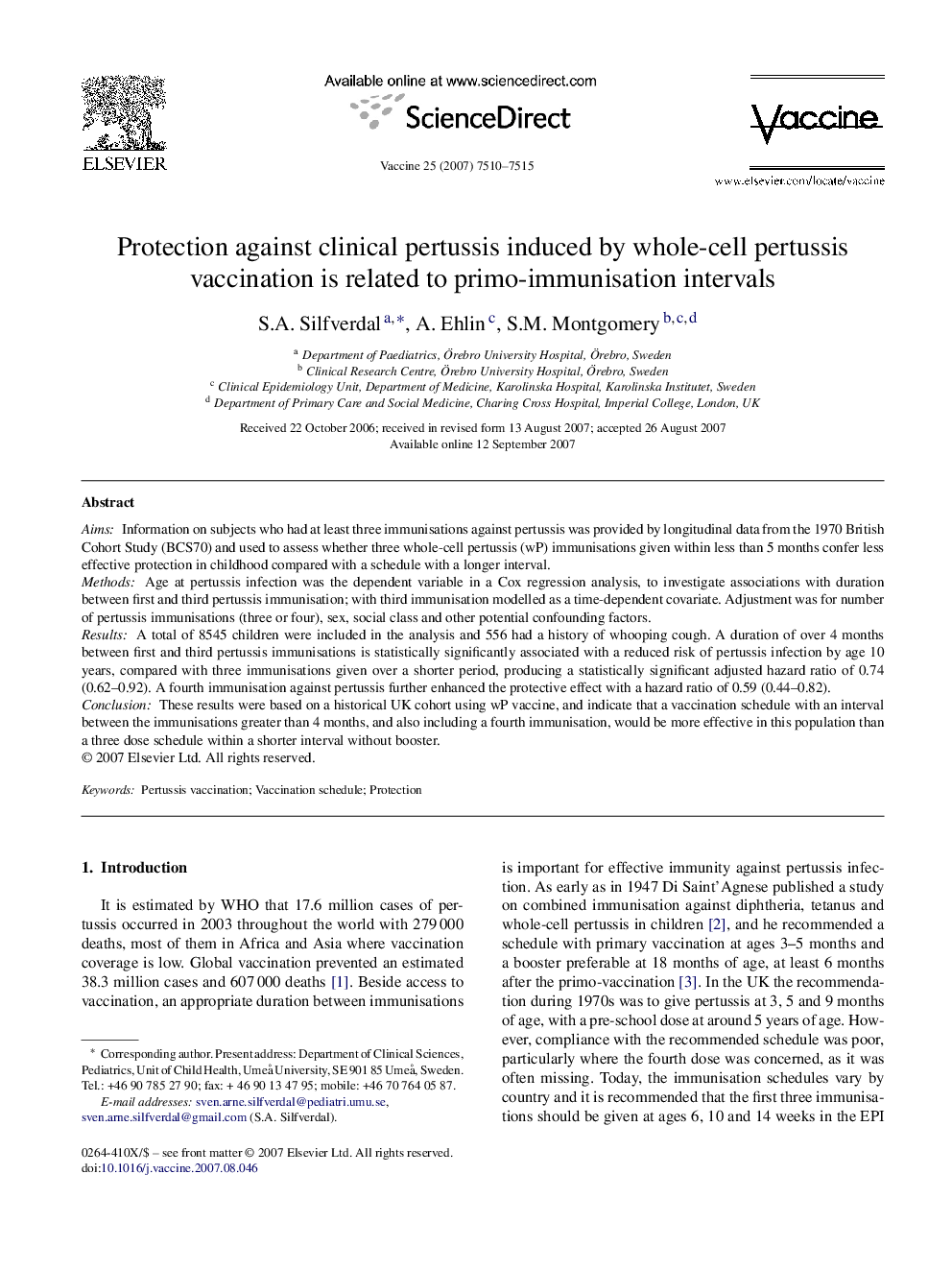| Article ID | Journal | Published Year | Pages | File Type |
|---|---|---|---|---|
| 2408074 | Vaccine | 2007 | 6 Pages |
AimsInformation on subjects who had at least three immunisations against pertussis was provided by longitudinal data from the 1970 British Cohort Study (BCS70) and used to assess whether three whole-cell pertussis (wP) immunisations given within less than 5 months confer less effective protection in childhood compared with a schedule with a longer interval.MethodsAge at pertussis infection was the dependent variable in a Cox regression analysis, to investigate associations with duration between first and third pertussis immunisation; with third immunisation modelled as a time-dependent covariate. Adjustment was for number of pertussis immunisations (three or four), sex, social class and other potential confounding factors.ResultsA total of 8545 children were included in the analysis and 556 had a history of whooping cough. A duration of over 4 months between first and third pertussis immunisations is statistically significantly associated with a reduced risk of pertussis infection by age 10 years, compared with three immunisations given over a shorter period, producing a statistically significant adjusted hazard ratio of 0.74 (0.62–0.92). A fourth immunisation against pertussis further enhanced the protective effect with a hazard ratio of 0.59 (0.44–0.82).ConclusionThese results were based on a historical UK cohort using wP vaccine, and indicate that a vaccination schedule with an interval between the immunisations greater than 4 months, and also including a fourth immunisation, would be more effective in this population than a three dose schedule within a shorter interval without booster.
